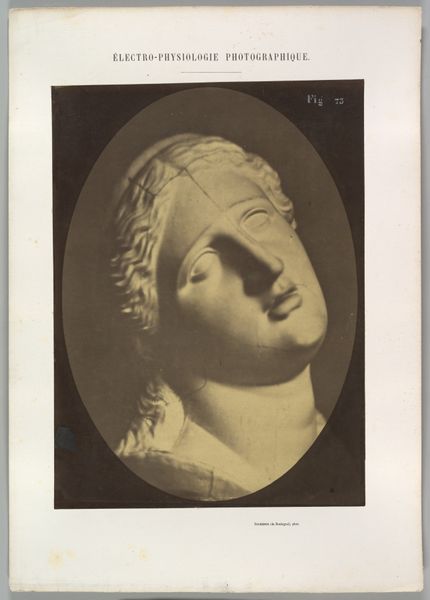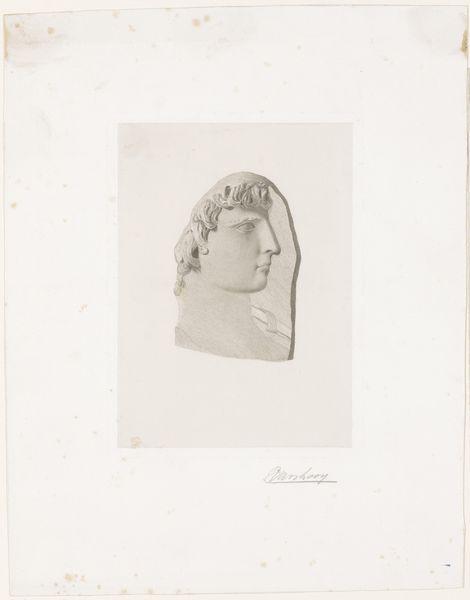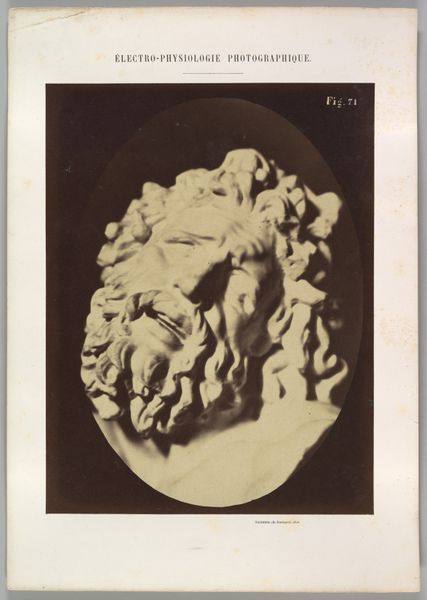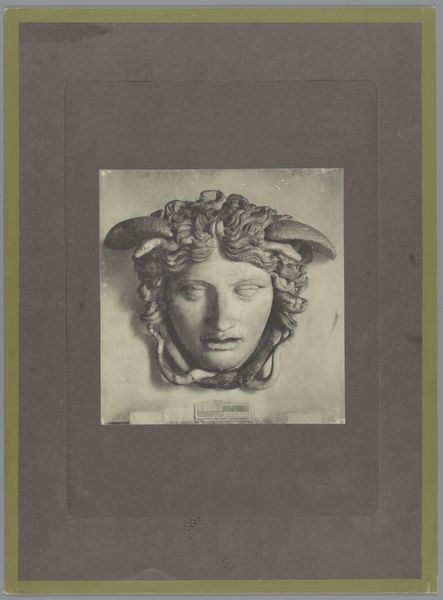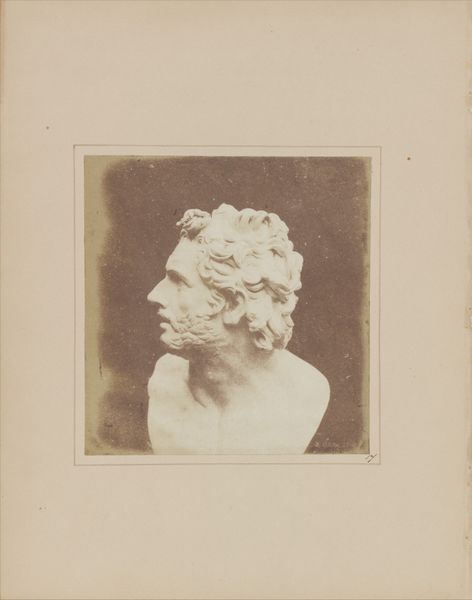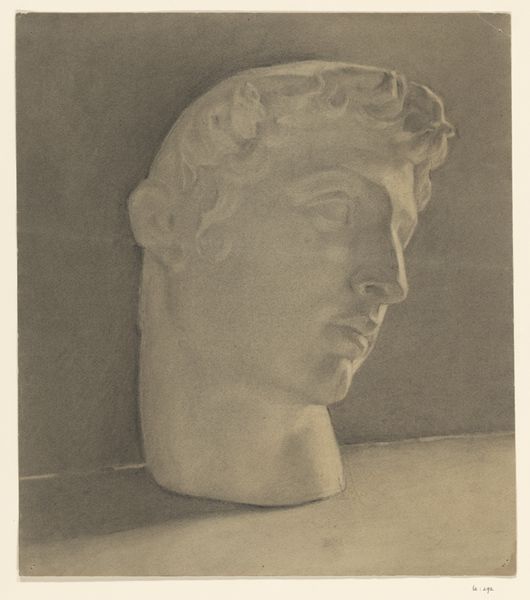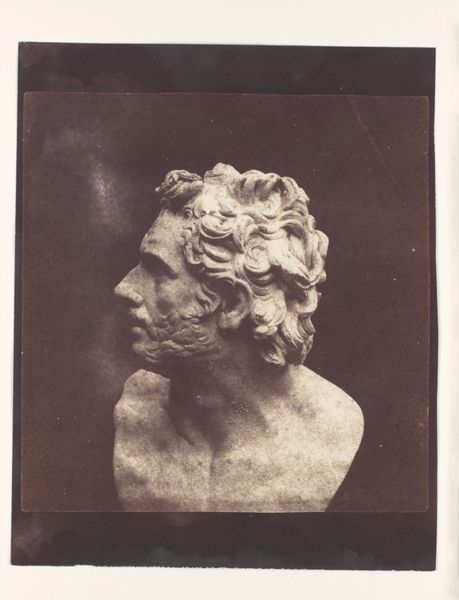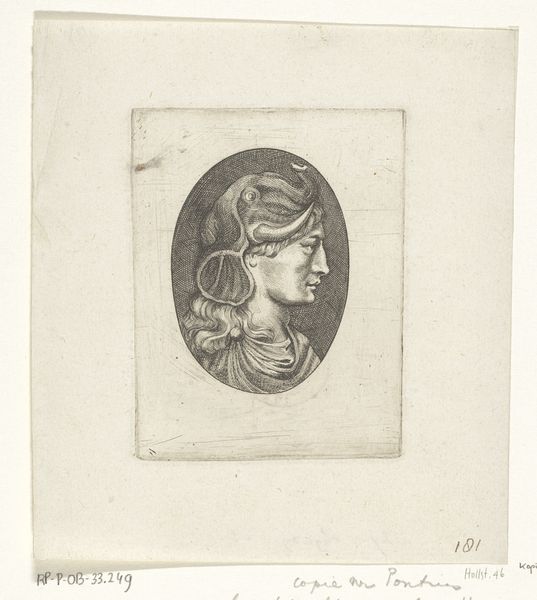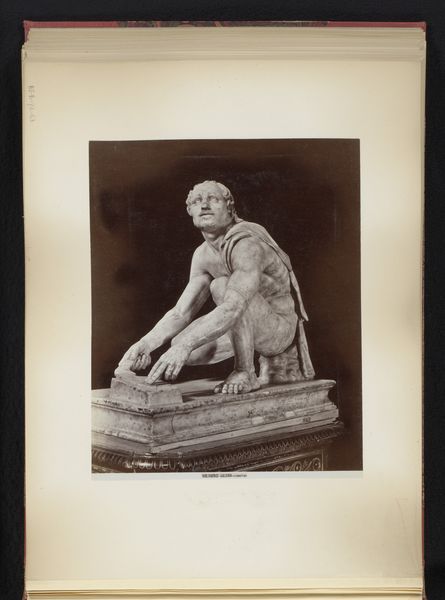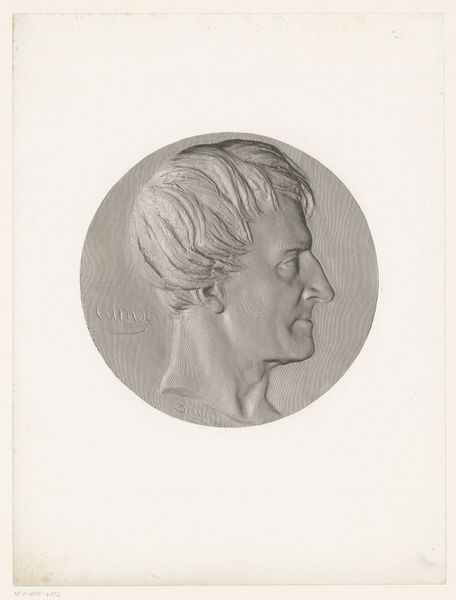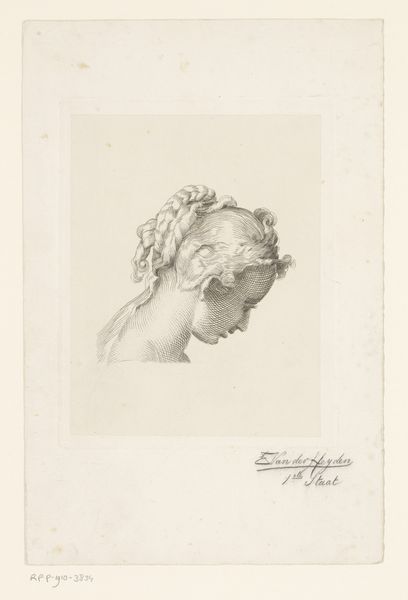
Figure 66: Head of Arrotino (the spy, the knife grinder, and so on) 1854 - 1856
0:00
0:00
photography, sculpture
#
portrait
#
head
#
photography
#
sculpture
#
history-painting
#
academic-art
Dimensions: Image (Oval): 28.5 × 20.4 cm (11 1/4 × 8 1/16 in.) Sheet: 30 × 22.7 cm (11 13/16 × 8 15/16 in.) Mount: 40.1 × 28.6 cm (15 13/16 × 11 1/4 in.)
Copyright: Public Domain
This is Figure 66: Head of Arrotino, a photograph made in the 19th century by Guillaume Benjamin Amand Duchenne. The artist used photographic processes, which were relatively new at the time, to capture a head with a specific facial expression. The photograph's material qualities – its sepia tone, the texture of the paper, the way light and shadow define the contours of the head – all contribute to its impact. Duchenne wasn't just interested in aesthetics, though. He was using photography as a scientific tool, documenting the muscular mechanisms behind human emotions. He would stimulate muscles with electrical currents to create certain expressions. The making of this image reflects a shift in how knowledge was produced and consumed. Photography allowed for the mass dissemination of information, and Duchenne was part of a broader movement to apply scientific methods to the study of the human body. It challenges us to consider how technologies shape our understanding of ourselves, blurring the lines between art, science, and social control.
Comments
No comments
Be the first to comment and join the conversation on the ultimate creative platform.
